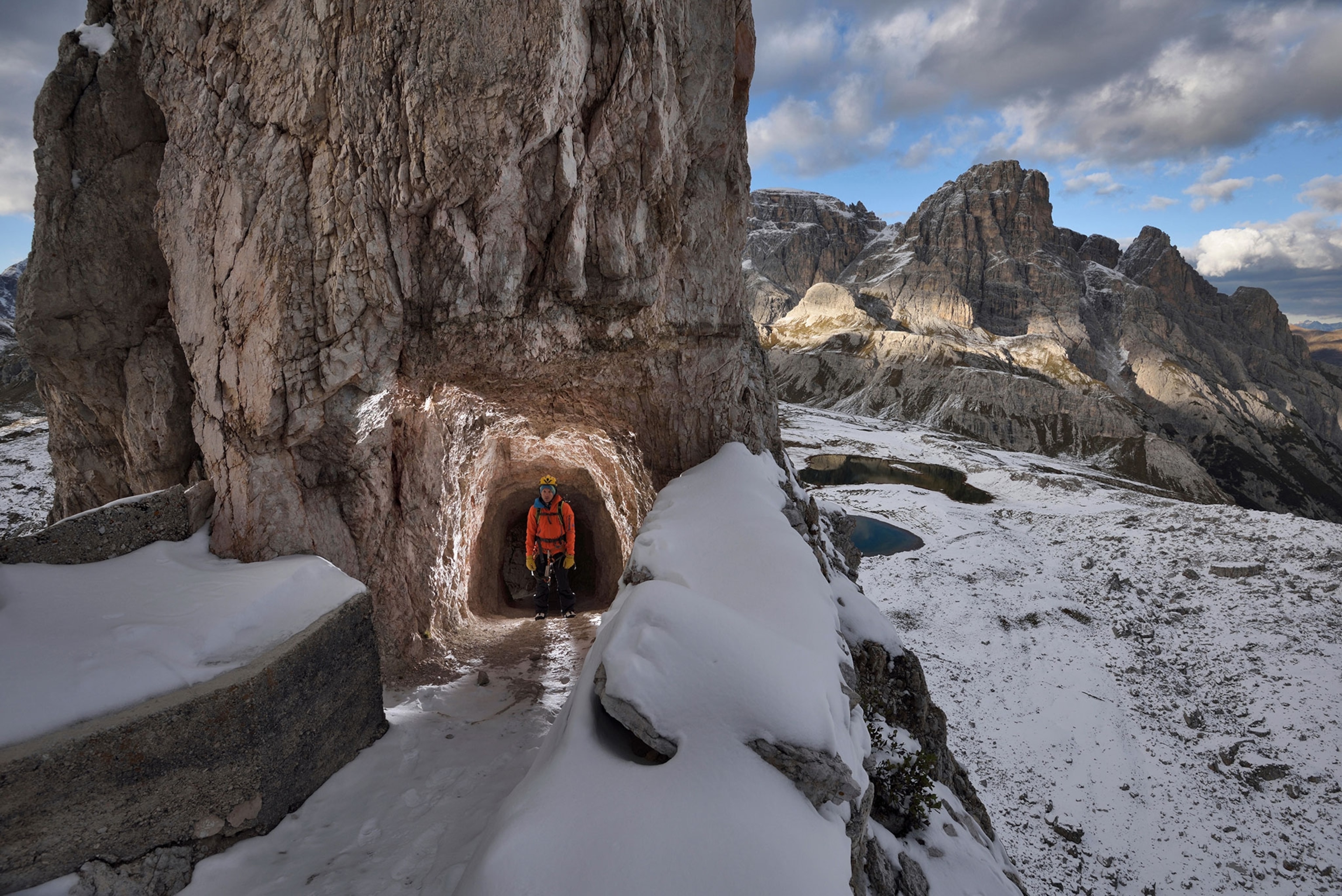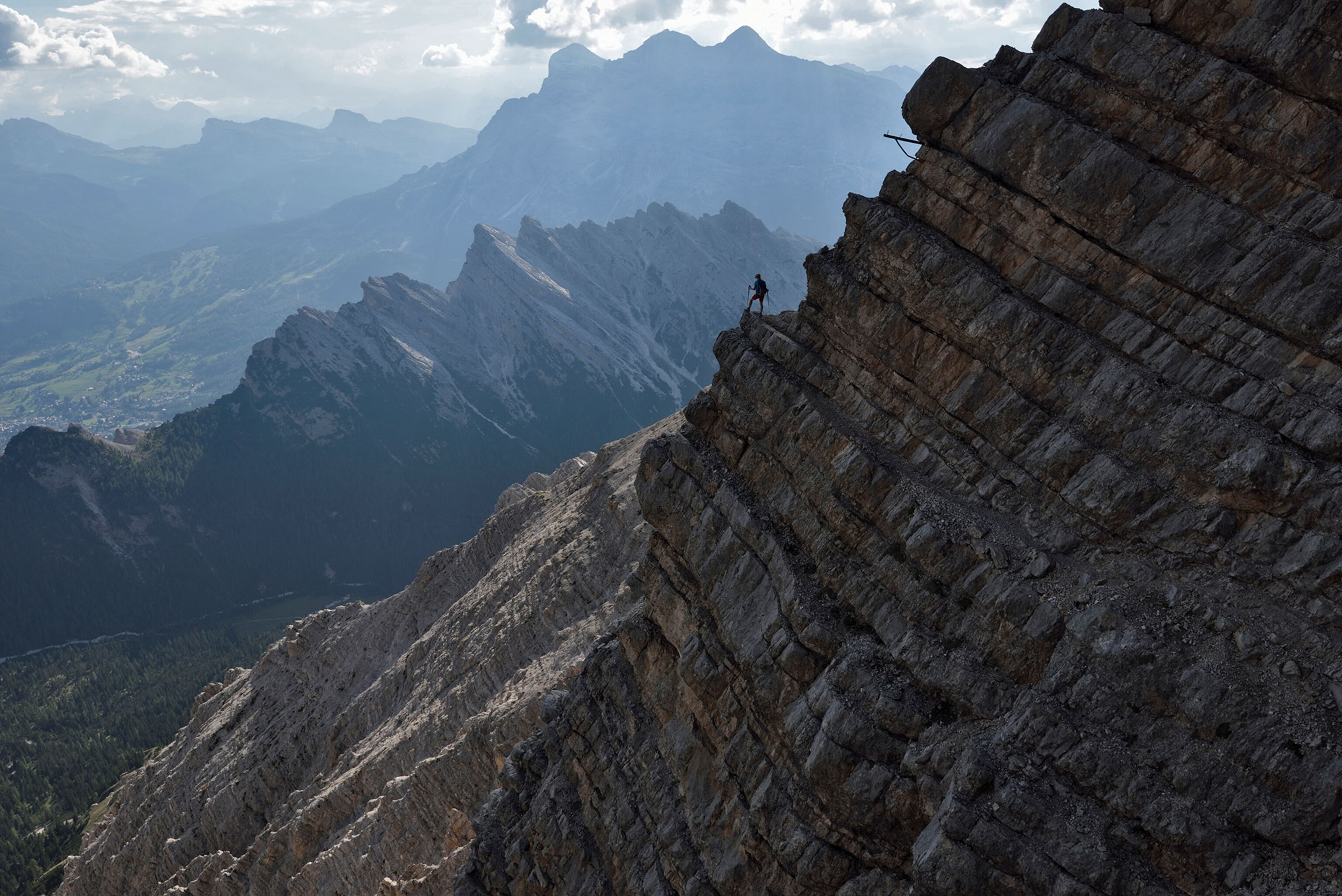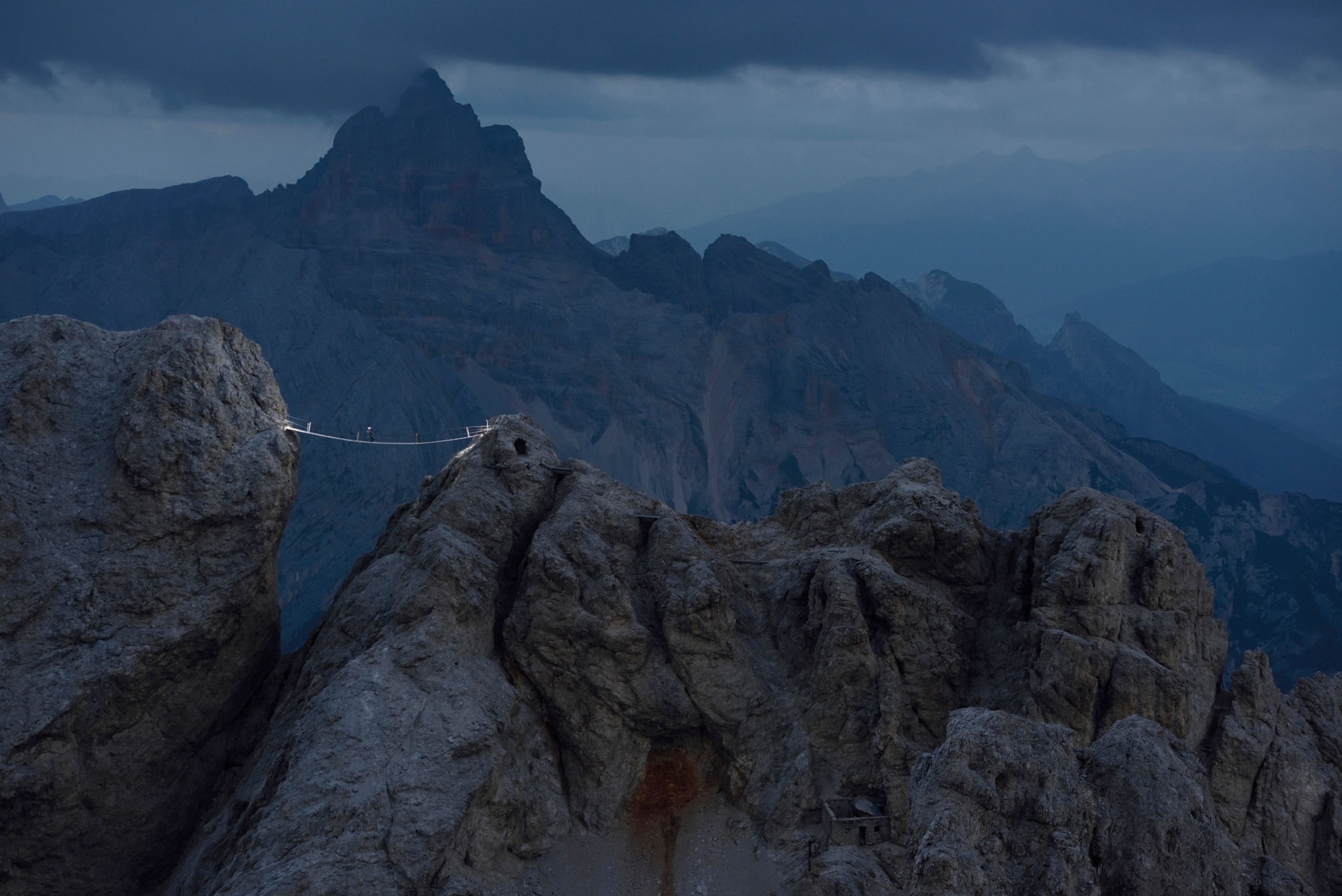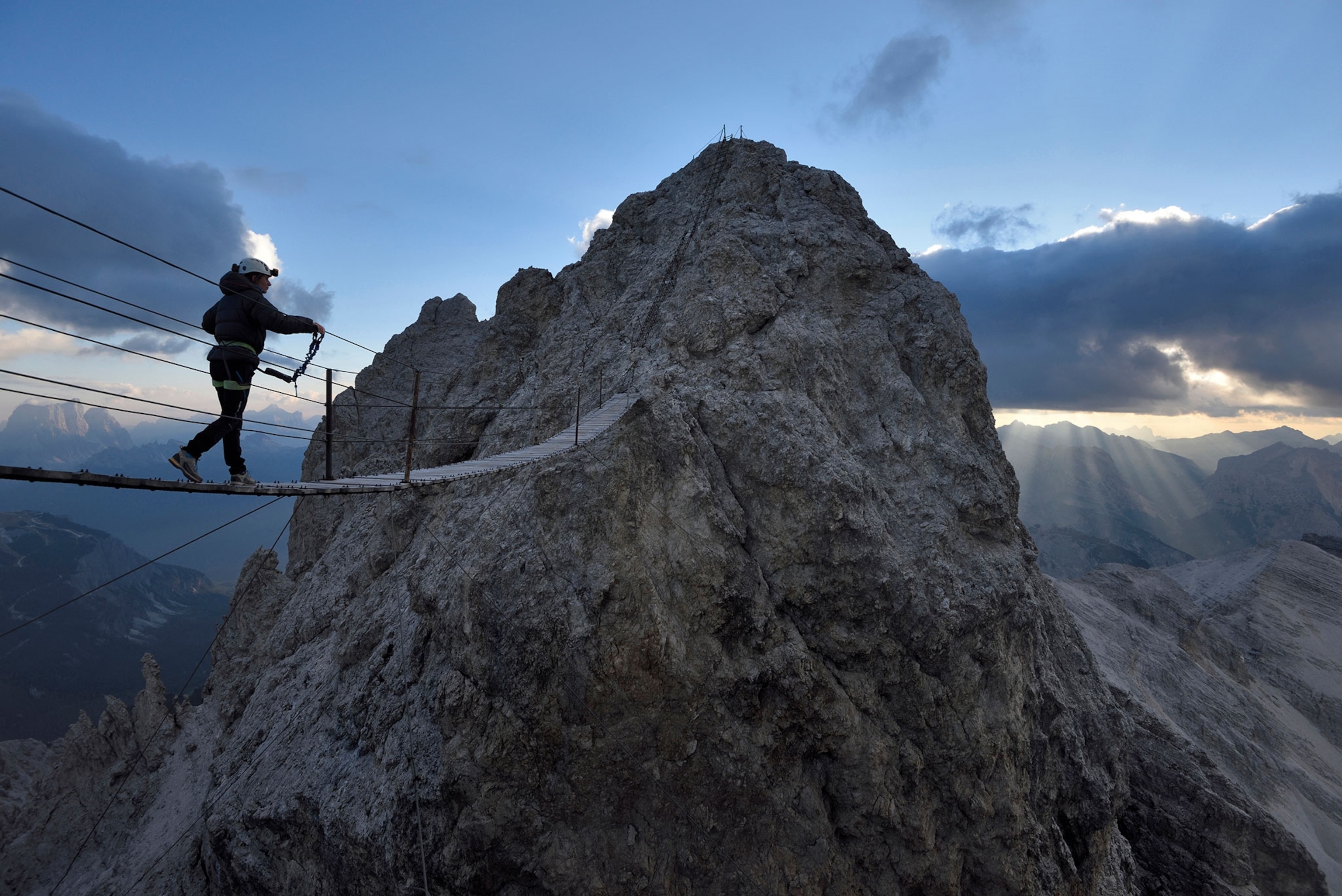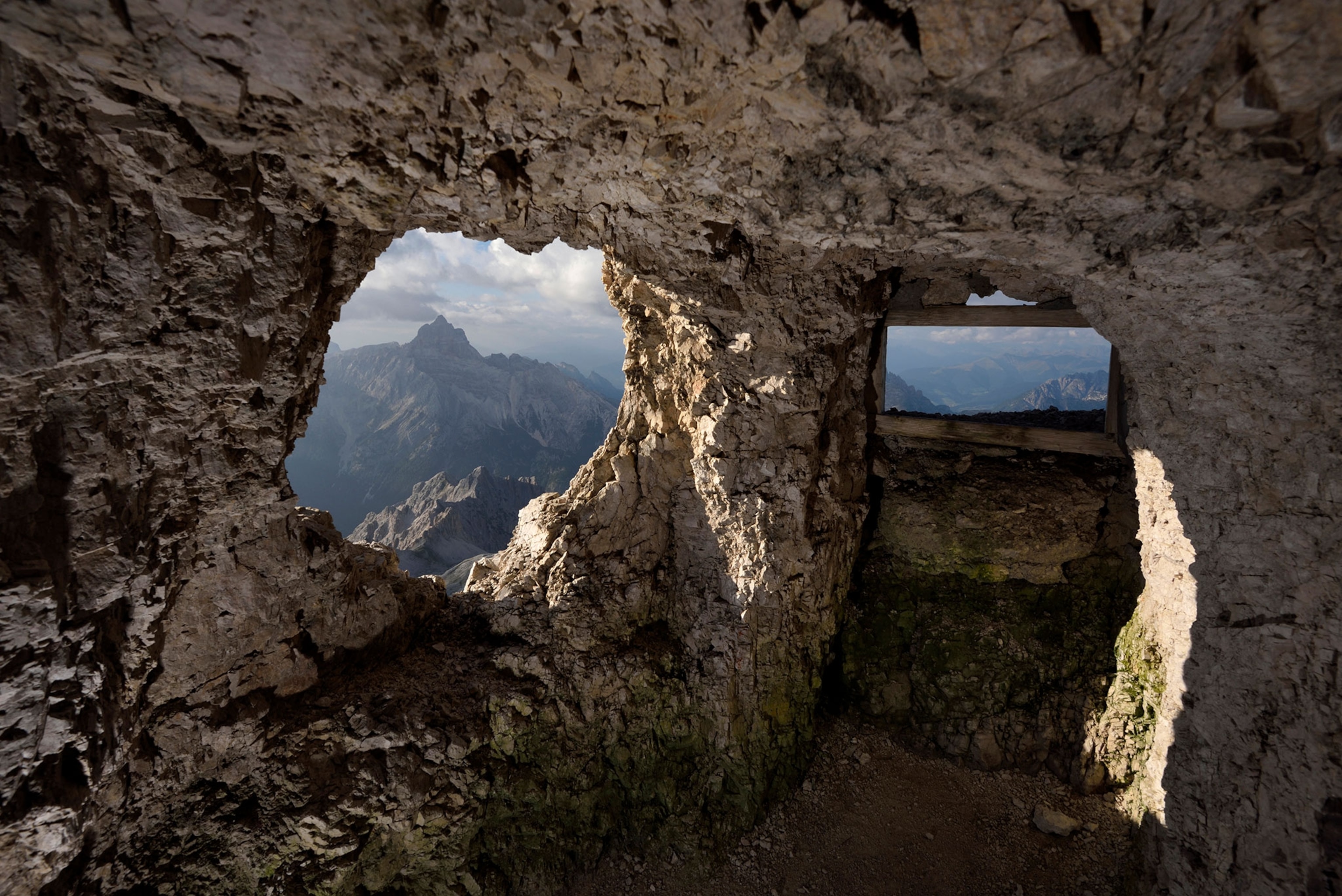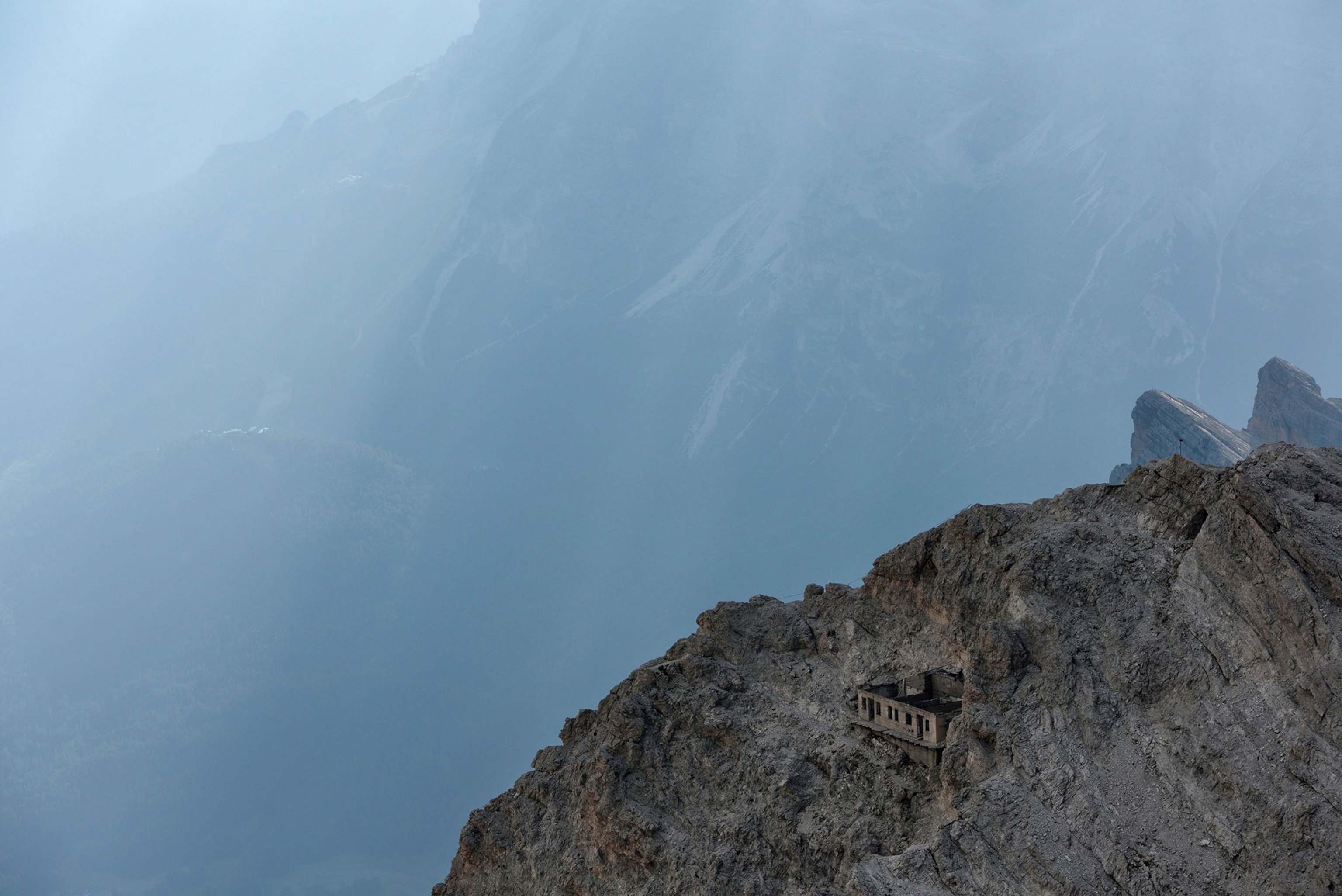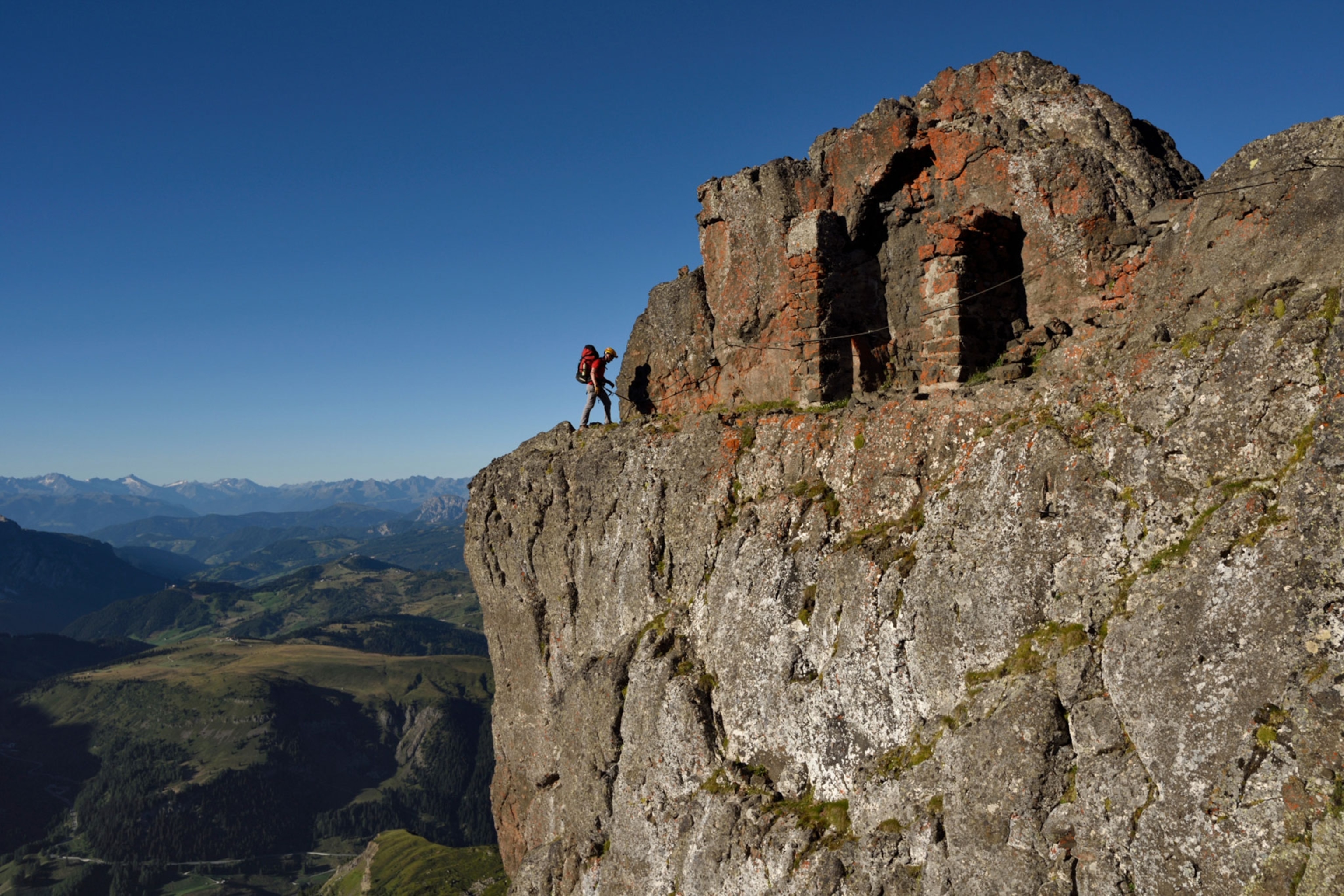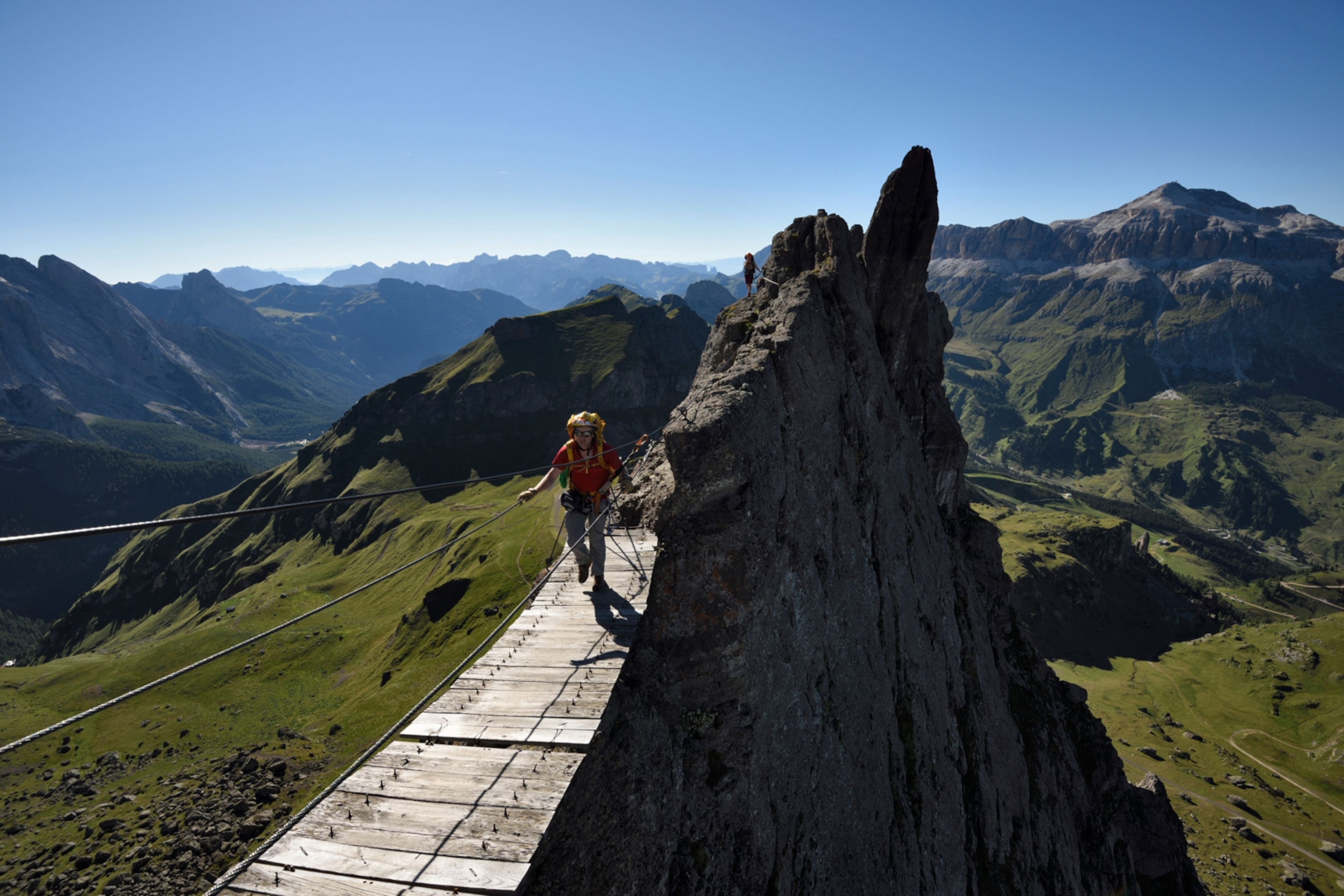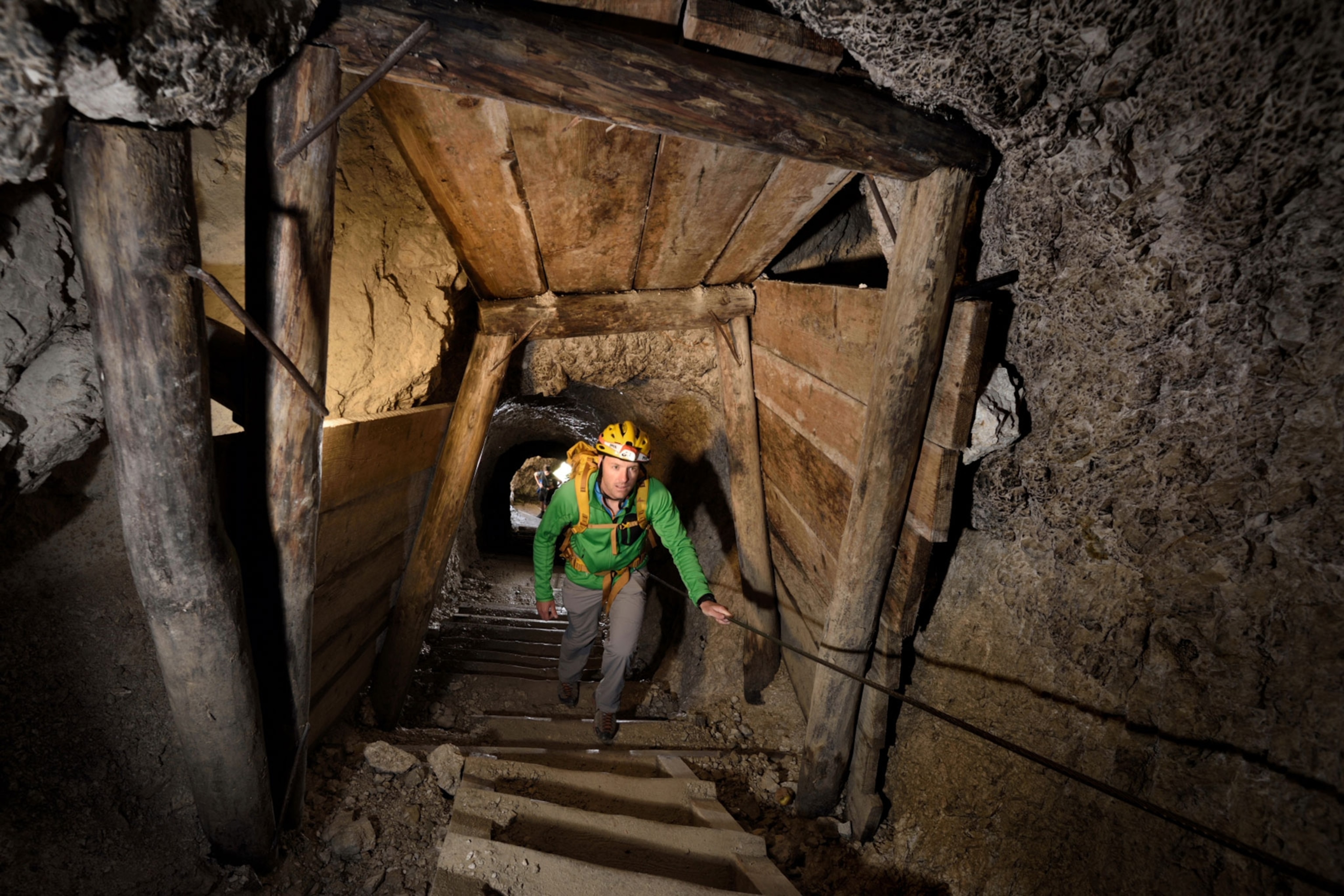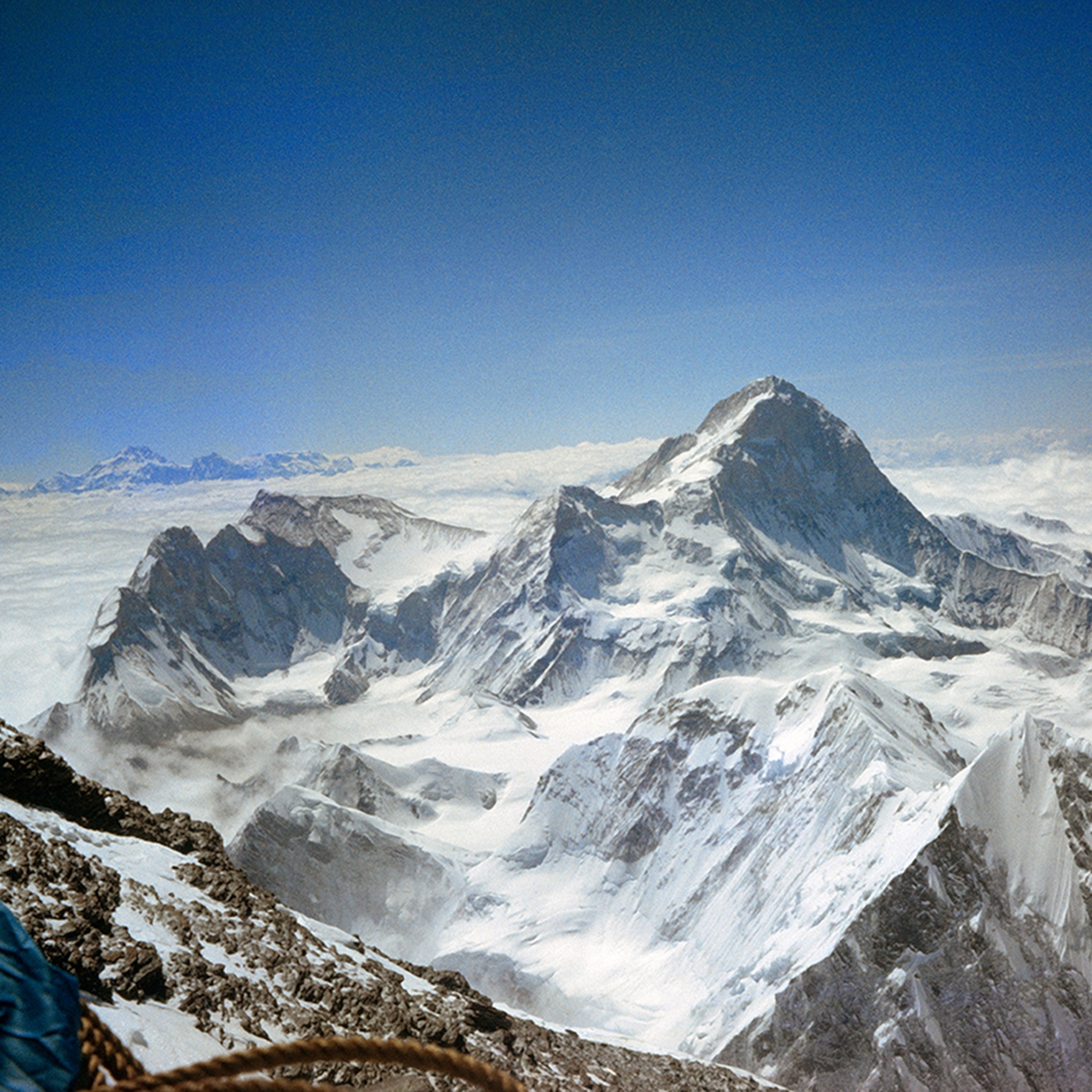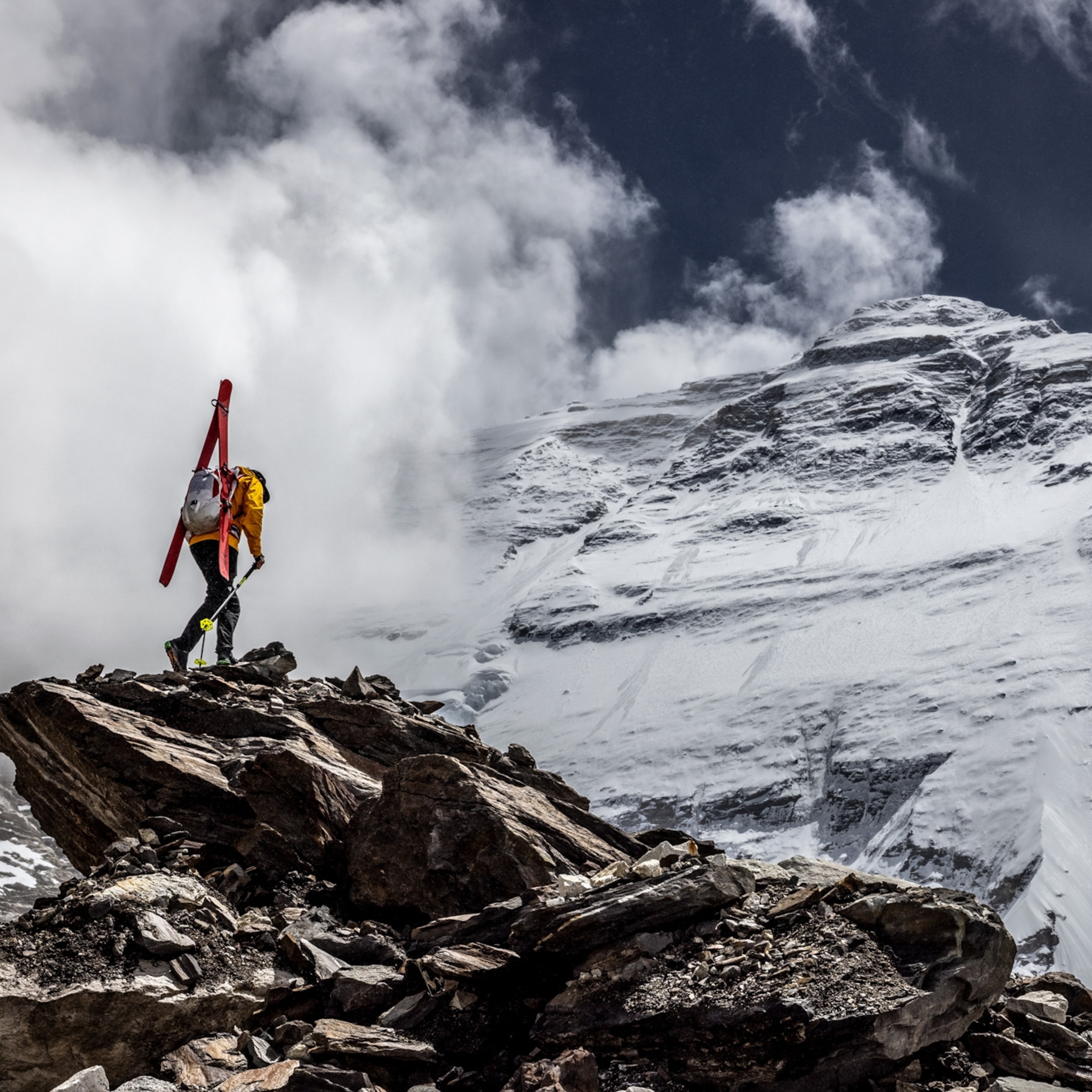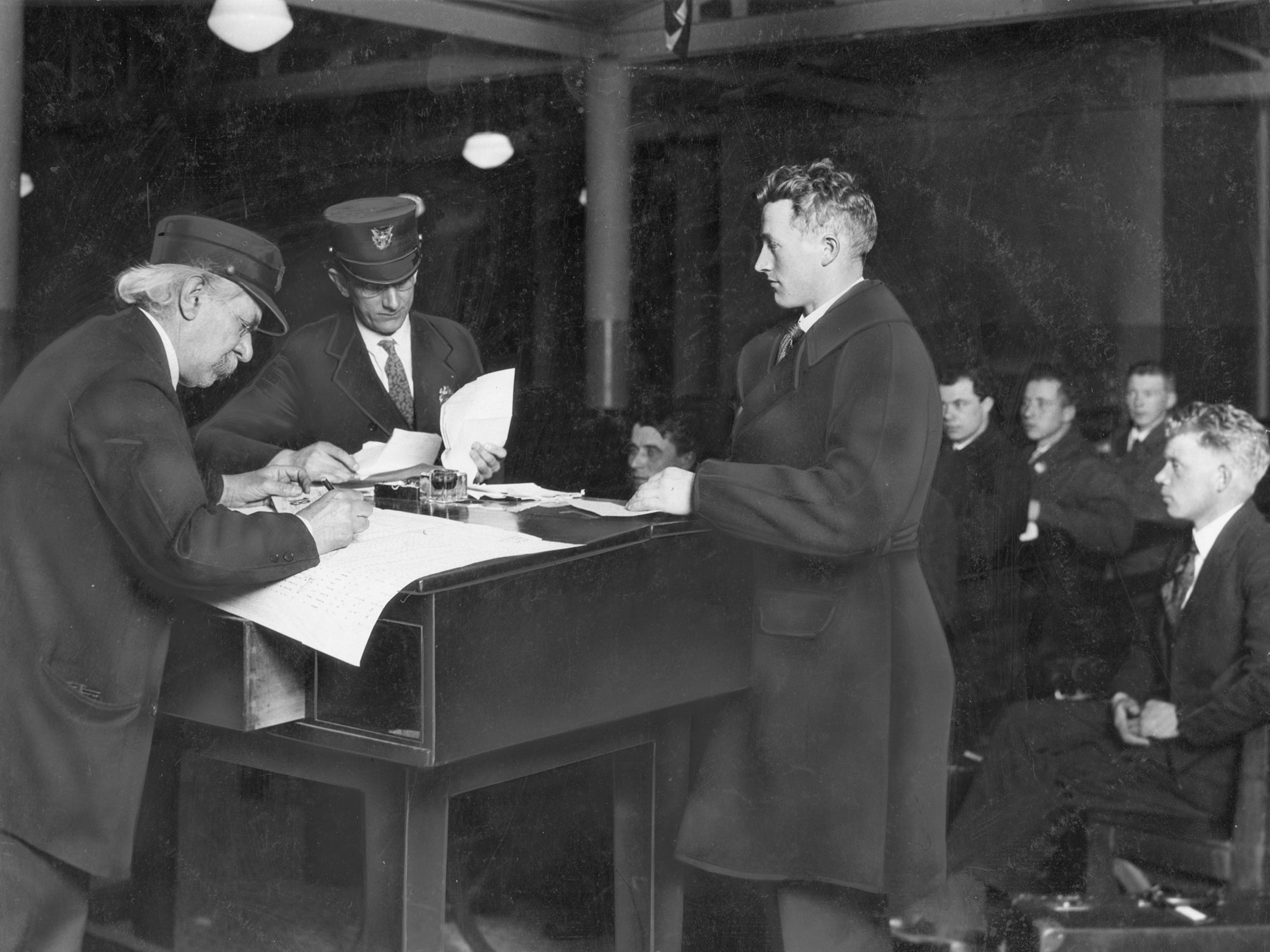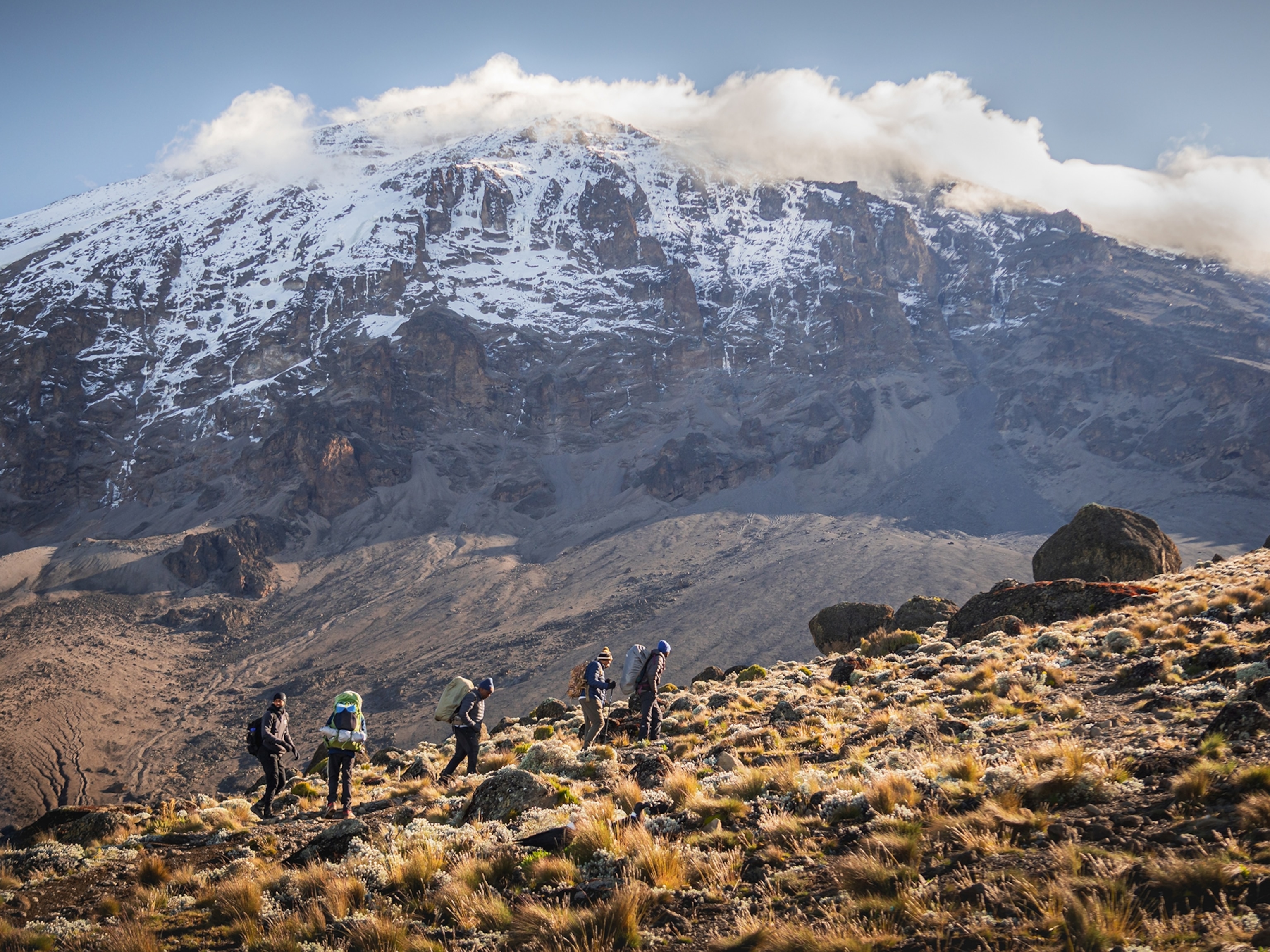Incredible Photos of Hiking Italy's 'Iron Roads'
Remnants of World War I, these via ferrata take hikers to remote reaches of the Italian Alps—and tell stories of battle and bravery.
As my watch beeped twice to signal that 4 a.m. had arrived, I glanced up at the outline of the Tre Cime peaks of the Italian Dolomites to see if there was any sign of light in the sky. National Geographic photographer Robbie Shone was alongside me and, despite the freezing temperatures, he was utterly absorbed in his work, moving the camera and adjusting the exposure settings every few minutes to try to capture the night shot he’d been dreaming of for months. Robbie spends much of his time taking photos in caves around the world, but like me, he is a hopeless mountain addict, and the prospect of capturing a shot of these mountains was more than enough to energize him, even at this time of day. As we shuffled about I jokingly asked Robbie if he couldn’t just use a huge flash instead of waiting three minutes for the camera exposure settings to capture the required light. But compared to some of the people who had stood here, we had it easy—nobody was trying to kill us.
We both live Innsbruck, Austria, just north of the Dolomites, and over the course of the summer we’d been exploring the Dolomites’ famous via ferrata (iron roads): a network of cables and metal ladders that allow access to and travel through otherwise impenetrable mountains. Although these now serve as a tourist attraction, most of the via ferrata in the Dolomites were created during World War I to get troops and supplies high into the mountains so that soldiers could establish bases from which to fight. One of the oldest military principles out there is that whichever side holds the high ground has the advantage—and there is no ground higher than a mountaintop. As these bases were established, they also began to include buildings perched above huge, precipitous drops and an impressive network of tunnels.
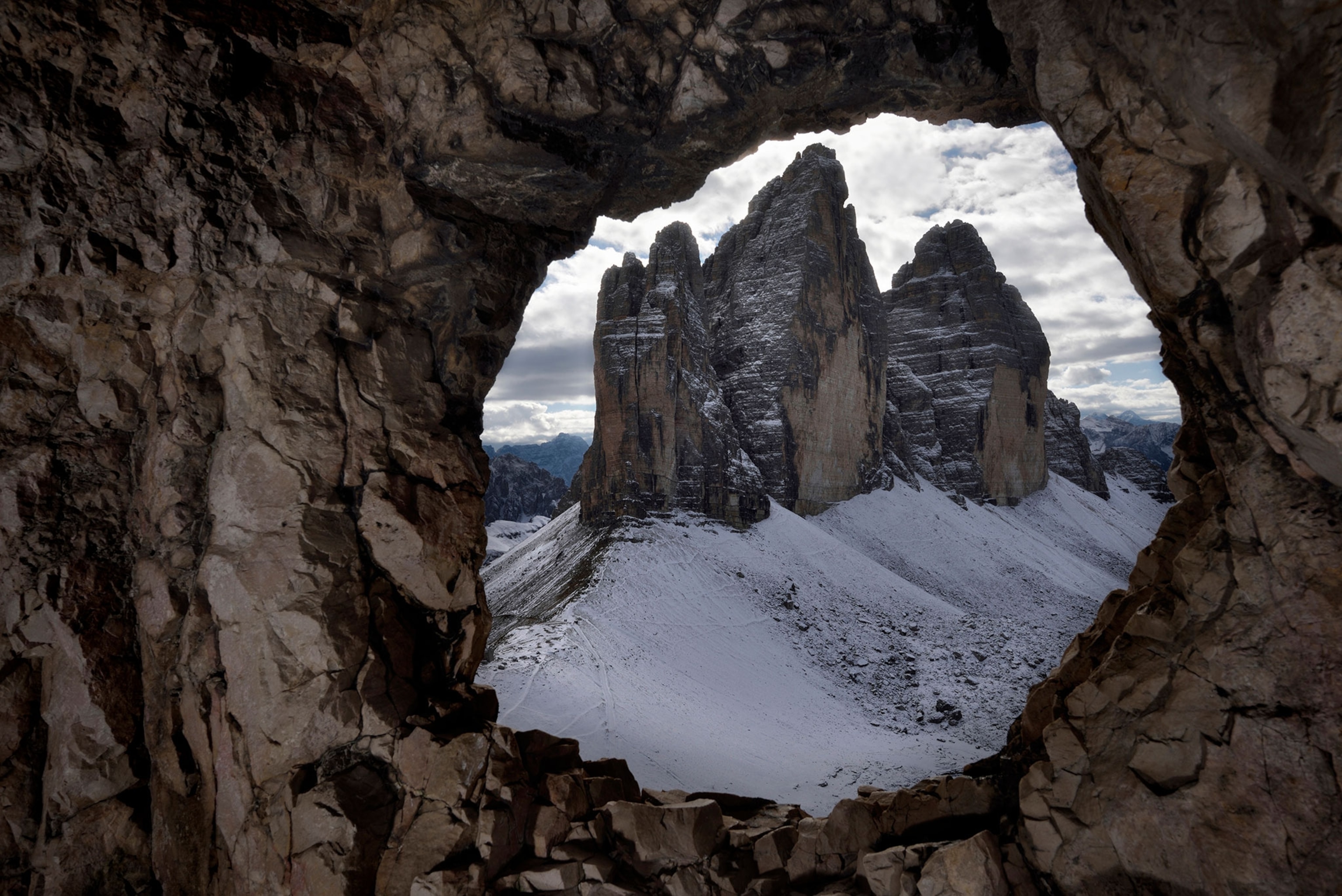
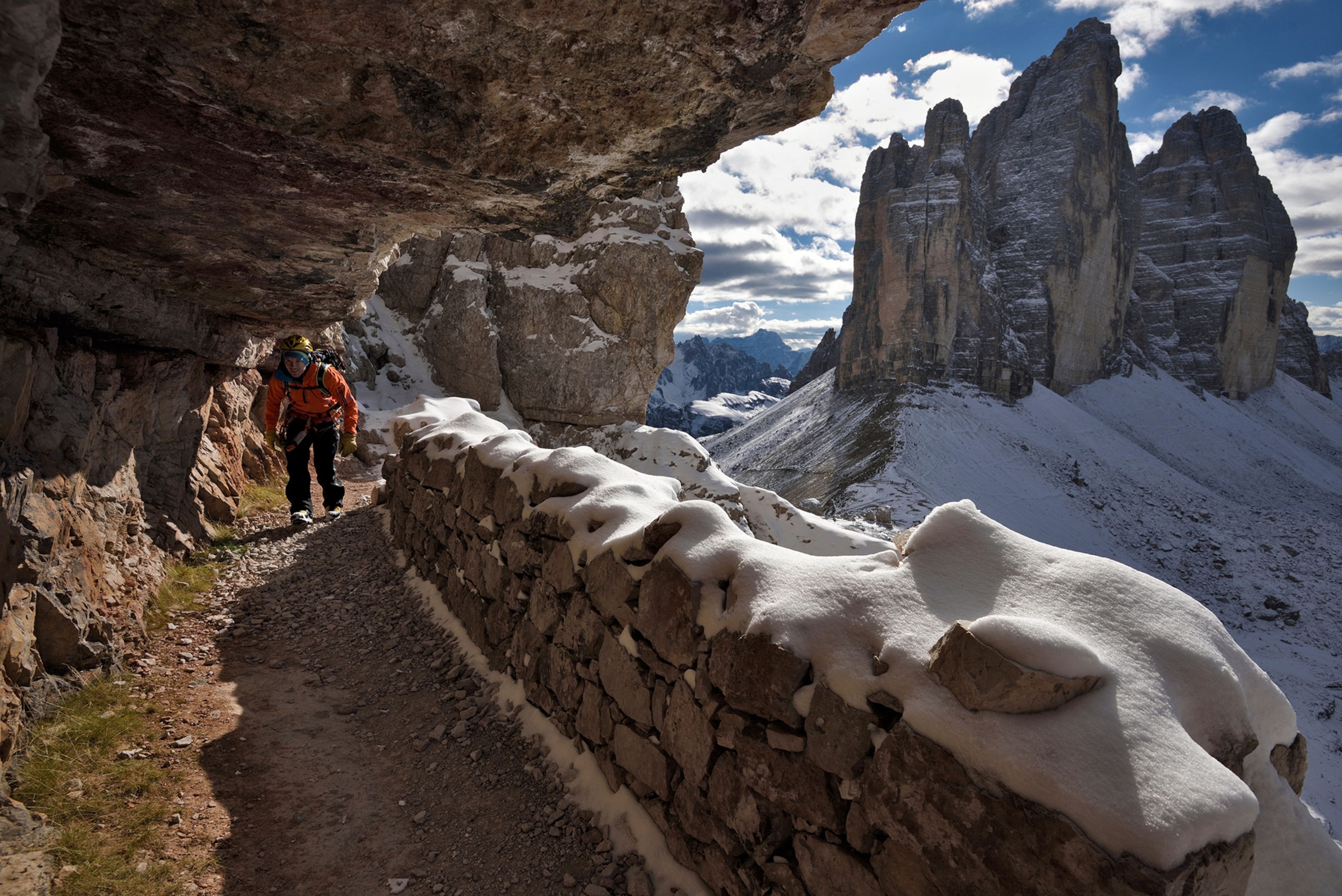
For those with a sense of adventure and a head for heights, via ferrata are a fabulous way to explore the Dolomites and gain access to the remote limestone peaks for which the area is famous. Via ferrata have more recently sprung up across the European Alps, and there are even a handful in the United States now, but none ooze history and poignancy like those in the Dolomites. (See a photo gallery of via ferratas around the world.)

During World War I (and, to a lesser extent, World War II) the Dolomites saw extremely fierce fighting. The year 1915 had Austro-Hungarian forces taking up strategic positions in the Dolomites to protect themselves from the advancing Italian army, and over the next few years both sides created and relied upon via ferrata as a method of moving through the mountains. As such, the appeal of this mountain range today is twofold. First, the scenery is some of the most beautiful on Earth (Reinhold Messner, the first man to climb all 14 of the world’s 8,000-meter peaks, has often stated that the Dolomites are the most aesthetic mountains he has ever seen). Second, the whole area is full of history—the turn of every corner seems to reveal something fascinating and thought-provoking.
Italians referred to the battles in the Dolomites as il fronte vertical. Soldiers were fighting not only the enemy, but the elements as well: 60,000 World War I soldiers are thought to have died in avalanches in this relatively small mountain range. Temperatures plunged to 40 degrees below freezing for days on end as troops huddled in the mountainside huts and tunnels.
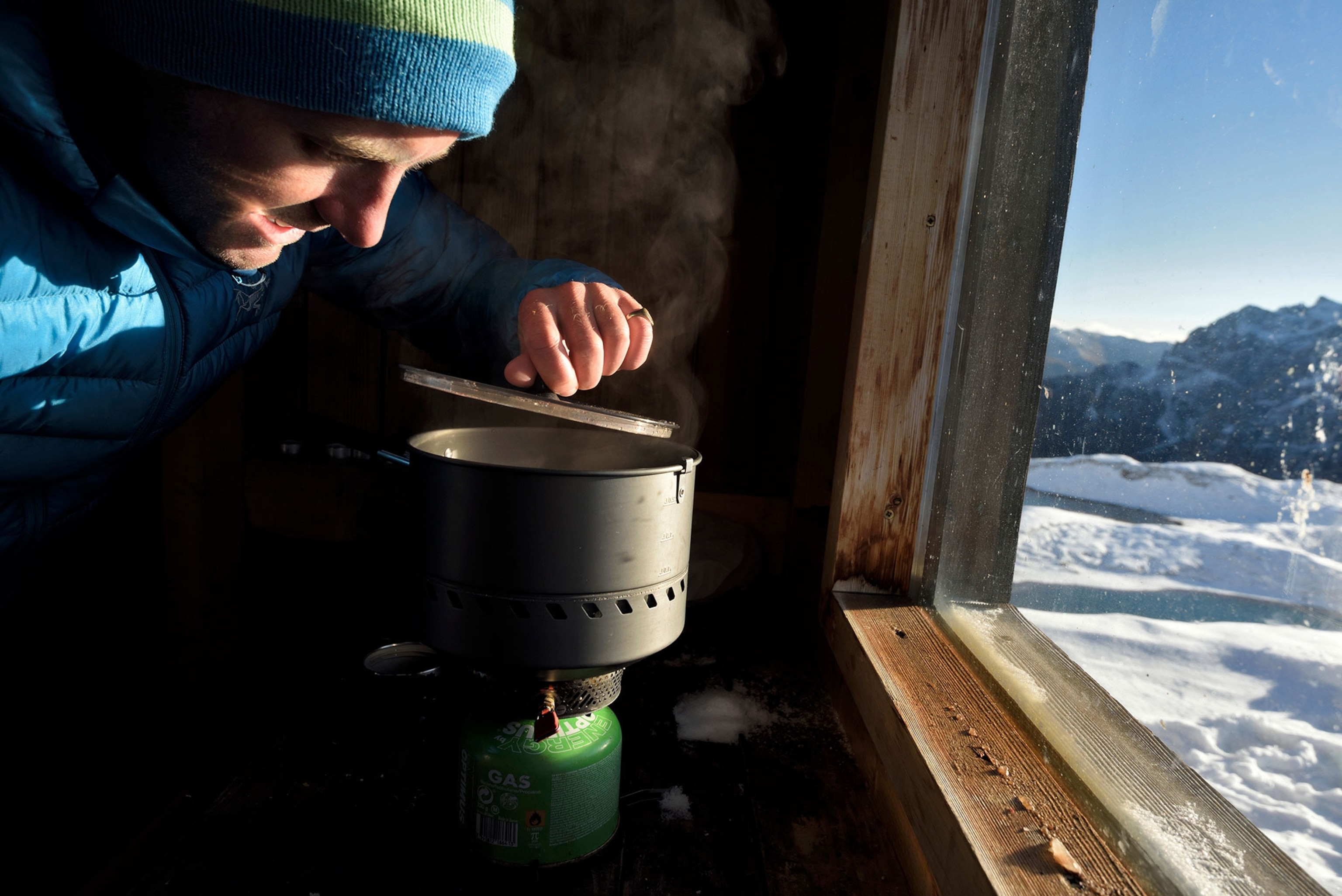
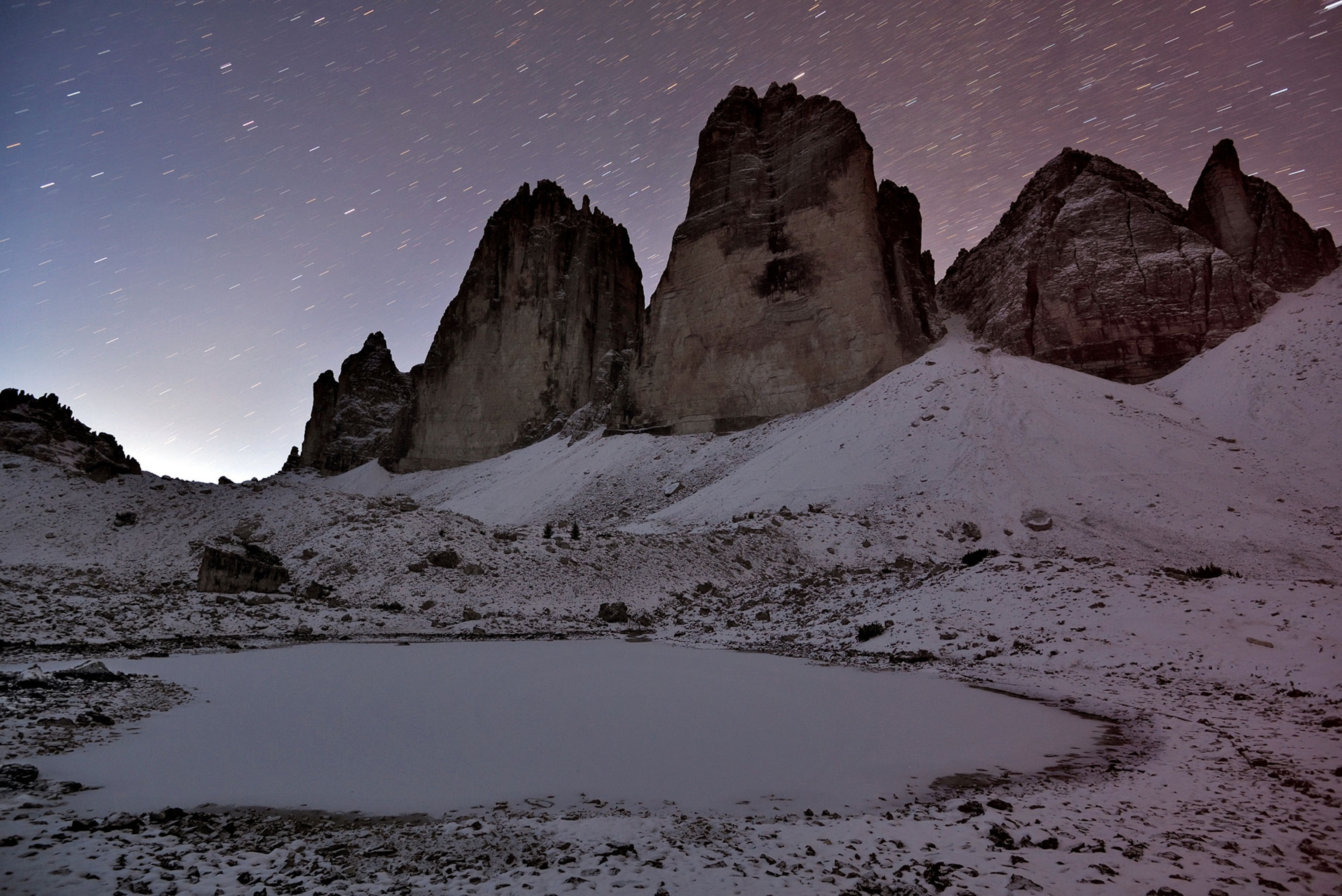
Even compared to their famously incompetent British and French counterparts, the Italian military commanders were known to be inept, and many of troops fighting on the fronte vertical were neither trained nor equipped to be there. Faced with these difficulties, some units tried to flee, unable to understand who they were fighting for or why. The Italian generals’ response: invoke the Roman policy of decimation, shooting one in 10 men from every unit that deserted.
Few visitors to the cramped, low, damp tunnels of the Dolomites seem to complain. The intact machine gun posts, rusted piles of barbed wire, and bullet casings that can still be found on the ground are reminders enough that short-term physical discomfort is nothing in comparison to what others must have suffered here.
The Lagazuoi tunnels, cut through the rock face above the Falzarego Pass, are particularly haunting, beginning from a beautifully situated cable car station complete with restaurant and information boards. Riding the cable car and emerging at the top is staggering—the view seems endless—and with the sun beating down it is impossible not to feel a surge of spirit. But just 50 meters or so from the station the tunnels begin to wind their way through a series of rock buttresses, and the contrast between the comfort of the sunny mountains and the dark, damp tunnels is shocking.
Italian forces dug much of the tunnel network to place mines under the Austrian positions, and while the biggest known explosion did not achieve its aim because the Austrians heard the Italian drilling and deserting their positions, the effects of the mines can still be seen today in the form of damage to the rock faces. Between 1915 and 1917, at the peak of the conflict, there were 300 Italian soldiers stationed in the Lagazuoi tunnels. Those who were lucky enough to survive endured every form of fear and suffering for no discernible military gain over two years of fighting.
The Five Via Ferratas Explored in this Story
Via Della Trincee. This wonderful traverse begins with a ride up the Portavescovo cable car from the village of Arabba. From the cable car station, there is a 20-minute approach walk and then around three hours of via ferrata along an exposed ridge. The views of the Marmolada south face are incredible and the route is littered with wartime ruins. If you take a headlamp, you can explore a long system of tunnels at the end of the route.
Lagazuoi tunnels. Start from the Falzarego Pass, close to Cortina, and ride the Lagazuoi cable car to the Rifugio Lagazuoi. From this point there are seemingly endless tunnels to explore, and best of all, the route is downhill all the way. The tunnels do not involve any via ferrata, just walking.
Via Ferrata Ivano Dibona. Although most of this route is walking, there are also some exposed sections of via ferrata, and the longest suspension bridge in the Dolomites. The route used to be very easy access using the Son Forca chairlift and Staunies gondola, but since the gondola closed, the route is much more hard-earned. The effort is worth it, though.
Via Delle Scalette. This excellent, if short, via ferrata is accessed from the Rifugio Auronzo, northeast of Cortina. The walk in is quite long—around two hours—but the scenery is stunning, with the legendary Tre Cime peaks towering above you. It is separated from the Sentiero de Luca/Innerkofler by the Rifugio Locatelli, so combining the two routes and having lunch at the rifugio makes for a wonderful mountain day.
Sentiero de Luca/Innerkofler. A combination of via ferrata, scrambling, and tunnels, this is one of the most varied and scenic routes in the Dolomites. The tunnels are unavoidable, so bring a headlamp!
Elsewhere in the Dolomites there are via ferrata along perfect rock-ridge lines, towering almost inconceivably high above the valleys and villages below. The via ferrata della Trincée (“way of the trenches”) traverses an arête opposite the famous Marmolada peak and takes climbers to some of the most exposed buildings anywhere in the world. Just standing in the doorways and looking down gives a sense of vertigo, but understanding what it must have been like to live here, constantly alert to any sign of an enemy attack, feels impossible.
We stayed on the Trincée ridge as darkness fell and Robbie worked to create a night image of several ruined buildings with the Marmolada in the background. With him above me, I stood in the ruins watching the sun dip below the horizon and contemplated who might have sat on this same spot, desperately wishing for a few more minutes of daylight. Of what or whom might they have been thinking? Was it the last sunset they ever saw? Eventually I turned my headlamp on and walked back up to meet Robbie on the ridgeline with more questions than answers in my head. We walked down off the mountain 20 meters apart, silently lost in our own thoughts.
As the summer went on we slogged up scree slopes, crossed the longest suspension bridge in the Dolomites (it lies at the start of the Ivano Dibona via ferrata and was the location for the famous bridge scene on the 1993 Sylvester Stallone movie Cliffhanger) and spent many hours hiking up and downhill as we learned more about the Dolomites and their incredible history. Eventually the days began to shorten and the temperatures fell. Winter was coming.
Other Via Ferratas to Consider
Daubenhorn, Switzerland. This is the longest and toughest via ferrata in Switzerland. It starts in the small town of Leukerbad and passes through some incredible mountain scenery. Fitness and a head for heights are essential.
Marmolada, Dolomites, Italy. One of the few via ferrata that predates the World Wars, this route was first established in 1903. It involves hiking on a glacier and provides a long, wild day in some huge mountain terrain.
Chang Kong Via Ferrata, China. A notoriously scary route, with a massively exposed traverse along some rickety old wooden boards, this is one for experienced mountaineers only. The reward for your efforts is a visit to an ancient Taoist temple and a teahouse, both of which sit at the end of the route.
Telluride Via Ferrata, Colorado. This increasingly popular route in the Colorado backcountry will hopefully lead to many more springing up across the United States.
- National Geographic Expeditions
We’d made three short trips to Italy over the previous few months, and our fourth and final expedition of the summer had brought us here to the most famous of all the Dolomites mountains. We’d spent much of July and August sweating under perfect blue skies, but heavy snowfall in the days before our arrival at the Tre Cime region had transformed the environment. Sunny, warm days and the threat of sunburn had been replaced by thick snow and an icy wind that seemed to penetrate our modern, high-tech clothing. On our previous trips we’d bivouacked out under the stars—partly to get night photos, but mainly because it is so enjoyable—but for this final trip we knew we’d need a roof over our heads.
The car crunched to a halt in the parking lot below the Tre Cime mountains and we scurried through the snow into the sanctuary of the Rifugio Auronzo, our home for the night. In summer this huge mountain hut is busy with tourists and climbers, but by early October it is all but deserted; we were the only guests staying there on both nights of our trip. Renovation work was being done, though, and the presence of some workmen meant that using a combination of English, German, and sign language we were able to enjoy some company over dinner. Yet the hut still felt empty, and the echo of our footsteps as we moved around the corridors was unnerving. As Nico, one of the workmen at the Auronzo, told me, “It’s been fun to be here, but it’s time to go home now.”
Ready to climb? The best guidebook for the region is The Dolomites: Rock Climbs and Via Ferrata by James Rushforth.
The next day we explored the Via Ferrata Delle Scalette and the neighboring Innerkofler route. The heavy snow made progress slower but it did at least give us insight into just how tough living and surviving in these mountains can be. The countless tunnels and battle stations we passed through reminded us of what had gone before, and I almost felt guilty to be enjoying the view while standing somewhere so somber.
At 4 a.m. the following morning, shuffling around below the Tre Cime and waiting for the camera to do its thing, I felt less guilty for thinking about my own suffering. We cannot change the past, but the wonderful thing about the Dolomites’ via ferrata is that they allow us to see, to understand, and to respect what took place in these mountains.
